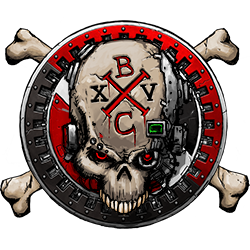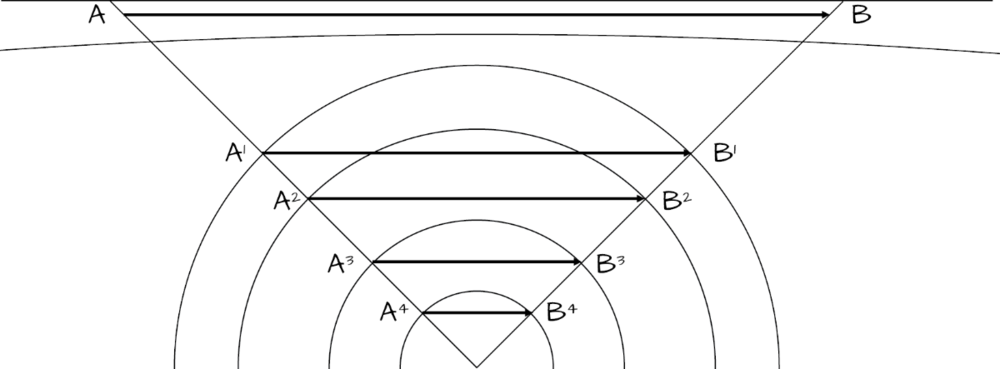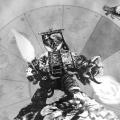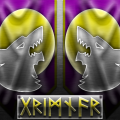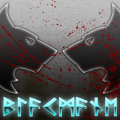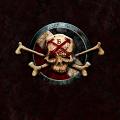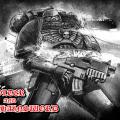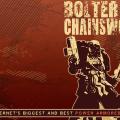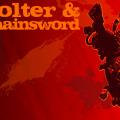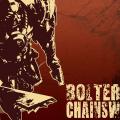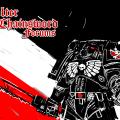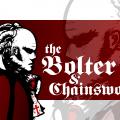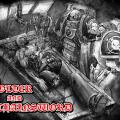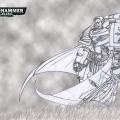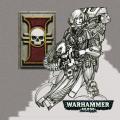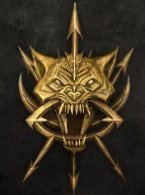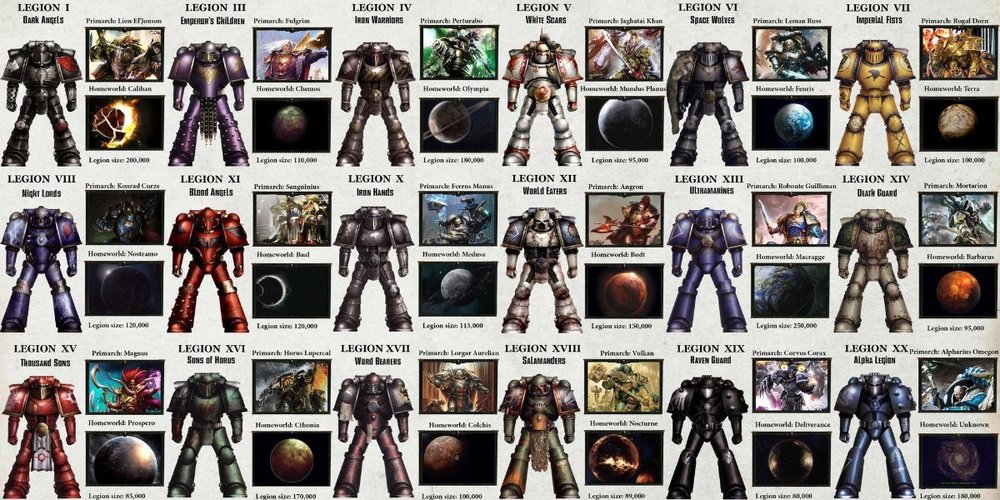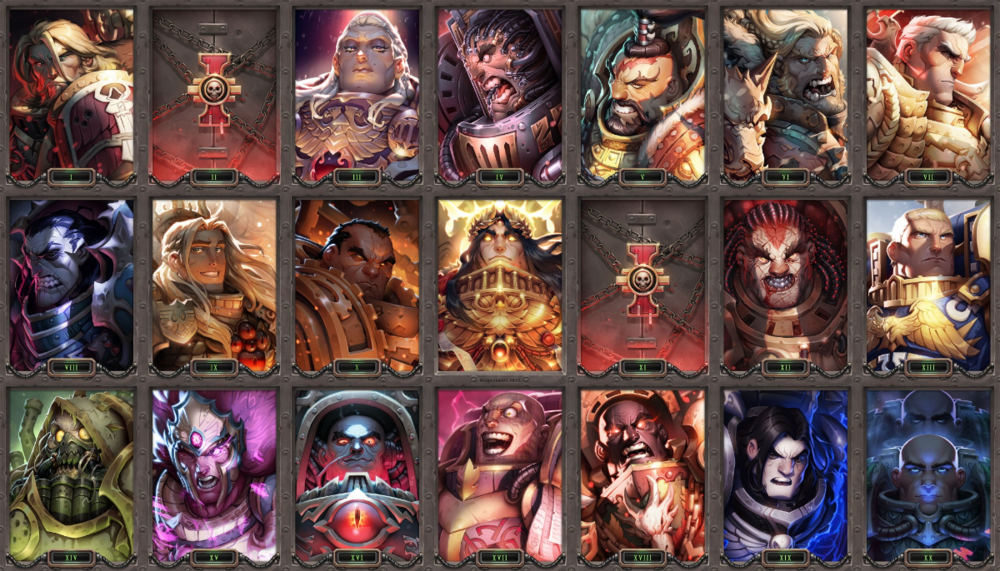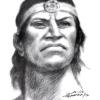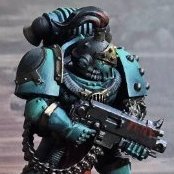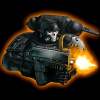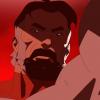Search the Community
Showing results for tags 'Background'.
-
So, I thought that I would give an insight into (the pretentiously labelled) "Kage-verse" when it comes down to the Craftworld Eldar. This will be the basis for my idiosyncratic Craftworld for my mini painting (hopefully that will go well), so not a waste either way, but when it comes to the setting this is my basis for the Eldar as a whole that you can tweak to fit the established, canonical Craftworlds. This is probably going to be more bulletpoints/thumbnails until I get to seriously write it up. (It seems that my little supplement was more fragmentary than I recalled!) Inspiration: Peter F. Hamilton. The Reality Dysfunction. Edenist habitats CRAFTWORLD SOCIETY/GOVERNMENT The society of the Craftworlds is a strange hybrid of a number of distinct cultures and sub-cultures forced together as a result of the The Fall. Three major parts of society/government: Ancestor [The Past]. Eldar that have suffered death of the physical form. They transfer into the Infinity Circuit with full consciousness and can act individually for as long as they have the will to do so. Clan [The Present]. These are elective organisations drawing Eldar with similar ideologies and goals. They can be kin-based, but this is the exception rather than the norm. Clan leadership is exclusively derived from those indiviuals who have returned from following the Path of the Outcast. Seer [The Future]. Formed from a combination of the esoteric disciplines. Farseers are separate/advisory, *not* the leaders? Others to include: The Court of Khaine. Kaela Mensha Khaine (Shard; Infinity Circuit) The Young King [Ancestor; ceremonial] The Blood King [Clan; "Autarch"] The Blood Sage [Seer] Other Courts? THE PATH (Ai'elethra) There are five (5) Paths to the Eldar Path: Seer. Development of estoric abilities. Warrior. Development of martial abilities. Steward. Servants to society. Seeker. Explorers of science, art, and the esoteric. Outcast [Eshairr]. Those that fight the constraints of the Path. This differs from canonical treatments where everything is described as a Path. The difference is the use of terminology for older materials, e.g. WD 127, which describes "Ways". Herein, "Ways" are subdivisions of each Path, e.g. the discipline expressed through the "Howling Banshee" is a Way on the Path of the Warrior. The significance here is that an individual can become trapped on a Way OR a Path, with the former being more common than the latter: * Way-sworn. Individuals that have become trapped on a single Way, e.g. Exarchs of a single Temple. * Path-sworn. Individuals that are trapped on a Path, but cycle between the Ways. The wonderful thing about this structure, based on the original background, is that you don't have to invent some nonsense "Path of Command". Autarchs are, for all intents and purposes, Path-sworn Exarchs. (The selected Autarch would likely carry the term "Blood King" or "Blood Queen" if the gendered route is taken.) Thinking More on Outcasts Outcasts must necessarily forgo the protections of the Path. What are those protections? Compartmentalisation of the mind so that the Eldar focuses on the development of a number of related skills/abilities (Primary Abilities). They may readily access Secondary Abilities, or supporting skills that are otherwise not developed on any given Path/Way (as therein defined). Other skills/abilities that are not relevant are locked behind the construct of the Path and are more difficult to access. Outcasts, on the other hand, allow the breakdown of these barriers. <-- Need some way of representing this. (C.f. corruption from GURPS Horror?) TECHNOLOGY Previously I had taken the route that the Eldar had mundane technology to which they added estoric technologies ("warpcraft"). I'm no longer sure about this and would love to discuss the possibilities with learned people of the 40k lore! For example, previously I had Wraithbone as a nanopolymer (based on the literal definition of "psychoplastic") but should I lean towards the "fantasy" interpretation, i.e. psychically malleable energy (or the equivalent of ectoplasm)? This then became a channel for esoteric energies. The long-run idea is to avoid the notion that the Eldar can create matter and are functionally a post-singularity culture that is devoid of resource requirements. Unless they are...? * * * There's a whole bunch of stuff not covered here. I thought that I would throw it out there in case something jarred inappropriately, or there were some possibly better (and newer) interpretations out there that would need to be synthesised into the broader whole etc. Looking forward to the (hopefully) discussion!
- 27 replies
-
- Background
- eldar
-
(and 1 more)
Tagged with:
-
A common image conjured of the Imperium is that of the failing or inept bureaucracy that can lose worlds for centuries, resulting in the deaths of billions in an Imperium where human lives don't matter. And so on. You can probably drawn oodles of examples from the background materials that work with this type of imagery. Yet I say, "Au contraire". The Imperium of Man actually has a fantastic bureaucracy and, to have survived for over ten millennia, would have to. The details are, however, in the gaps and where one finds the information. * * * The premise is simple and not too stretch of the imagination from the established background materials on the structure of the Imperium. It was also something that was initially borne out of the consideration of something called the "Universal World Profile" (UWP) from a TTRPG called Traveller. These can be simple, but Googling around revealed a more complex version (that is tongue-in-cheek but includes the real version) that looks about perfect for something stored in the central archive of Terra: IMTU tc+ t5++(LBB#000016) tp ge-() 3i(+) jt a ls+ Eneri Dinshaa 0609 A588865-B S 323 If this looks like gibberish, you're spot on. And that's the point. The kind of thing that is archived on Terra is going to be the tip of the iceberg when it comes to the kind of data footprint that, say, an industrial world could generate over a given period of time. Yet where would more detailed information be found? In that answer you have the structure of the Imperium, which is oft-noted as being feudal and, herein, inherently hierarchical when it comes to data: Terra / Mars. Segmentum Fortress World. < Units of astrographic measure not described> Sector Capital. Subsector Capital. Individual world. For the purposes of, say, Inquisitorial acolytes running around looking for information (ala Dark Heresy 2e---not 1e as that is a terrible system!), where do you go for information. For obvious reasons you're not going to hike your way to Holy Terra (or Mars) to get the high-order information for anything except the most abstract of data investigations looking at patterns over huge swathes of the Imperium on a periodicity of when data is sent back*. No, you're going to go further down the data chain. There are some wonderful implications to this that does a lot of heavy-lifting as to how the Imperium operates in the various background materials. The big decision-makers of the Imperium are dealing with the most abstract data archives that is always going to be outdated (though not due to incompetence) and will rely heavily on "field reports" transmitted over the Astropathic Network. Hmmn. Actually, I'm going to leave it at that as "food for thought". * For those that hark back to the times of Portent / Warseer, can you remember "The Imperial Pony Express"!? ;) * * * As always, DISCUSS.
- 7 replies
-
- Background
- The Imperium of man
-
(and 1 more)
Tagged with:
-
Figuring out (heh!) the warp and the nature of warp travel is another arrow to add to the quiver of a TTRPG in the 40k setting. Doing so has to of course balance the background materials on the subject (mostly from WD139/140), the various themes (mostly oceanic/sub-oceanic), the official 40k TTRPGs, and the common hyperbolic statements and descriptions that find their way into the novels. Quite a bit of these materials, or thoughts rather, have long-since bit the dust on sites such as Portent/Warseer, 40kOnline, and the Anargo Sector Project, so I thought that I would try and rekindle them here. :) Principle Sources: Realms of Chaos (Slaves to Darkness; Lost and the Damned), WD 139, WD 140, and Watson (Inquisitor). Others as they surface from the darkest recesses of my mind, or as suggested by anyone who drops in their few pennies. * * * SEEING THE WARP (aka "Warp Sensors") Ala Watson (Inquisitor) this is a thing from back in the day and integrated into the premise of the "calculated warp jump", or the notion that slow warp travel is relatively safe and was likely the norm back in the days of the Golden/Dark Age of Technology (G/DAoT). Vitali Googol, when piloting the ship Tormentum Malorum, is able to look onto a screen and see a data visualisation of the warp. This means that computers (cogitators, if you must) are able to process data from some form of sensor and produce an image of local warp conditions that are distinct from the vision of a Navigator. This seems to play merry heck with modern background, so my take on this is to make only the upper portions of the warp---the closest conjunction between the matterium and the immaterium---as resolvable by such sensors, thus the domain of the calculated warp jump. Now, just because such sensors can see the upper-most reaches of the warp doesn't mean that they can interpret all the data that they are processing (more on this later). Furthermore, to penetrate the Veil between the immaterium and matterium also means that doing this is going to take a fantastic amount of power---perhaps the same or close to the amount that they would use when transitioning into the warp. So, how does this play out? Well, our ship sitting at or beyond the "warp zone" (more on that later) has to use fantastic quantities of energy to open up a "window" into the warp so that they can observe it. The navigational computers then have to study the warp and plot a course to their destination, something that has to be done ahead of time because of the rapidity of changes and the difficulty (?) of making course corrections while in the warp. This would mean that the amount of time between the observation/measurement and the amount of time that it might take to "warm up" the Warp Engines are going to be significant---it would allow drift between the observations of the warp and the warp-as-is. Depending on how turbulent the warp is, this would make the plotted journey less reliable the greater the time difference between observation and journey. < Okay, that might need to be filed away for inclusion in things like "Navigation rolls" or situational modifiers that impact that roll. > A BRIEF FORAY INTO THE NATURE OF THE GELLER FIELD The nature of the Geller Field is something that I do, ah, parallel a little bit from the main background for sheer level of interest. As described overall, the Geller Field is a bio-psychic energy field that surrounds the ship providing, in essence, an "air bubble" of reality. When this is turned off or otherwise ruptured, the warp pours in and, of course, the daemons. Because, of course, they're allows everywhere in the warp. < rolleyes > This is fine by me, but my alterations are thus: Turning off the Geller Field in the upper-most reaches of the warp is not immediately disastrous. Crew do not go instantly blotto, the laws of physics do not break down, people are not melted through the deck or bulkheads---the basic nightmare of The Philadelphia Experiment merged with Escher and Lovecraft is not inherently a thing. This is for the same reason that warp sensors and cogitators can interpret the upper layers of the warp---it's mostly "real". Ish. Real-ish adjacent. The other reason that you don't want to turn off the Geller Field is that it is a cross between the aforementioned "reality bubble", but also the sails of the ship; the motive force. Add "etheric" in front of Age of Sail terminology and it will work. Etheric sails. Etheric rudder. Etheric middenmast, or whatever. Physical or field structures that make the ship go forwards and which are controlled by the computer (calculated warp jumps) or the Navigator (err, navigated warp jumps). So, turning off the Geller Field in the uppermost layers of the warp (henceforth, The Shallows) is not insta-death. It also means that you've lost the wind from your sails and are becalmed. You're no longer a moving target, now you're a stationary target. Oopsie. GETTING INTO THE WARP---The "Warp Zone" This is the "safe" distance at which the "warp density" reduces to make it possible to open up a gateway to the warp. This is a section that I'm going to have to come back to because I've forgotten the formulae that I used (oops). IIRC it was based upon a gravitational calculated derived from the TTRPG 2300AD: Man's Battle for the Stars (i.e. when the stutterwarp drive would activate) from the central star of a system and/or nearest astronomical body, but also modified by the population of an astronominal body (e.g. the more people, the closer to said body the "warp zone" was). The "Warp Zone" also serves at the point that natural warp gates may occur (as they did in the old background), which would potentially be a huge economic benefit even while simultaneously being a strategic nightmare (i.e. a point in-system that you can enter the warp and your potential enemies can exit it). More later. THE STRUCTURE OF THE WARP Just like the ocean is divided into different zones, so too is the warp. Here's some quick borrowed terminology from oceanography to help out: Coastal aka "The Shallows". The uppermost layers of the warp and/or those closer to the minimum distance 'warp zone' (stable/safe, but potentially dangerous to jump into the warp from). Pelagic aka "The Deeps". The point at which you stop wading in The Shallows and start going into the realm of the ocean proper (aka the Warp Threshold, as it were): Epipelagic [re-name]. The shallow areas of the warp further away from the Warp Threshold. Bathypelagic [re-name]. The realm of the Navigator. This is where you dive beneath the Shallows of relative reality into the increasing "pressure" of unreality. Abyssopelagic ["The Realms of Chaos"]. The Realms of Chaos and Unreality. Doh! Hadopelagic ["Hades"]. The specific Realm of a Chaos God!? I just wanted to dive back into those warp sensors and what they would "see", and represent on-screen, at the various points: The Shallows. A vibrant see of shifting colours representing the tides and eddies of the deeper warp. Occasionally you'll see areas of black---either fast moving shears shifting parallel to the Conjunction Manifold (the Veil), or subducting currents that drive "reality fragments" deeper into the warp (the coloured bits) and see riptides and upwellings of the deeper warp. For calculated warp jumps, and for relative safety, you want to avoid the black. (Insert warp-sailor terminology about "The Black" etc.). The Deeps. The deeper you go into the warp, the more useless the sensors will be in that they will just show... black with the occasional colour flashes representing "reality fragments" that have been driven or sucked down into the depths. This is the province of the Navigator's Eye. Turn off the Geller Field and its "Etheric Sails" here and your SouttaL. The warp will come pouring in. Unreality will break down reality and, with the inrush of the warp, come the entities of the warp---natural (warp flora and fauna) and the unnatural gribblies that are daemons. WHY NAVIGATED JUMPS? So why Navigated Jumps over Calculated Jumps? Here you're going to have to get your geometry head on and imagine the arcs of circles of different radii: Nothing new with the above, but the only "new" thing to consider would link to the terminology: A-B. A Calculated warp jump. The Shallows. A1-B1. Epipalagic. A2-B2. Bathypelagic. A3-B3. Abyssopelagic. A4-B4. Hadopelagic. Better names are required (as above), but if you want to get from point A to point B real fast, you might have to travel through the actual Realm of Khorne---not for the feint of hearted, but potentially something that Yvraine and others did in Gathering Storm. Heck, you may even be able to go back and forward in time, here, because the Ruinous Powers are thought to exist at all points in time at once. So, in real space you go from points A and B in interstellar place and it takes a godawful period of time (sans relativity of not). As you dive deeper into the warp (downward arrows), you travel between A1 --> B1, A2 --> B2, and so on. As you go deeper into the warp, the distance between A' and B' (and A'' and B'' etc.) gets commensurately smaller, so the spatio-temporal "distance" between the points gets smaller. In short, you go faster. Woot. The warp is probably red like hyperspace from Babylon 5 because, as we are all given to understand, "Red wunz go fasta!" This means that the higher the skill of the Navigator, the deeper they can go into the warp but the more dangerous it is. Of course, the danger ramps up increasingly as you go deeper into the warp---the "currents" of unreality that much stronger. So in any given trip you're going to be weighing the odds of the local conditions of the warp (calm or stormy) versus how fast you want to get there versus how likely it is that you're going to get there (to your destination). :) You can actually calculate this using the distance table from WD 139/140. I'm going to do that later because it's something else that I've lost and I seem to remember that it took a little bit of calculation! :D
- 18 replies
-
- Background
- TTRPG
-
(and 1 more)
Tagged with:
-
-
-
-
-
-
-
-
-
-
-
-
-
-
Time ago, I found this pic here, about the Legions, their Primarchs, home world(s), colour scheme/heraldry and approximately size at the begging of the Heresy (More or less around Istvaan III Atrocity time). Not perfect, but still quite useful. Specially for people who start in Horus Heresy
- 3 replies
-
- Legions
- Background
-
(and 4 more)
Tagged with:
-
Many years ago, Laurie Goulding( Writer and editor for BL during lot of time. Now, he is Narrative Director of the League Studio Creative eXpressions Team at Riot Games Inc) intervened in a forum (now closed and lost most of the information on it) gave Black Library's official Primarch discovery order. Thankfully, this information was rescued and posted again here, but after so many years some few notes must be added. Anyway, this still looks like canonical. Well, as much canonical something about Warhammer can be, from GW! I add some extra notes at the end. Horus Lupercal* Leman Russ [DELETED FROM IMPERIAL RECORDS]** Ferrus Manus Fulgrim Vulkan Rogal Dorn Roboute Guilliman Magnus the Red Sanguinius Lion El'Jonson Perturabo Mortarion Lorgar Aurelian Jaghatai Khan Konrad Curze Angron Corvus Corax [DELETED FROM IMPERIAL RECORDS] Alpharius Omegon*** Notes: *Officially, Horus was the first recovered Primarch but in the novel Alpharius: Head of the Hydra, Alpharius himself states that he was the first Primarch recovered, hidden by the Emperor and Malcador for secret purposes. He was recovered in Terra, in Zharinam (aka Zhari Namco) Plateau. Remember, is Alpharius. Can be true or not... ** The Primarch of the Second Legion, according the Book Fulgrim: The Palatine Phoenix. So, the other is the Eleventh Primarch, the 19th recovered. ***Instead of Alpharius,was Omegon, his twin brother. Stated by Alpharius in Alpharius: Head of the Hydra. Same counsel as above (See *). Hope you can find this useful.
- 6 replies
-
- primarch
- Laurie Goulding
-
(and 4 more)
Tagged with:
-
40K player here who is not too familiar with the comings and goings of the Horus Heresy and am hoping that you guys might be able to help. Anyway, I've built a 40K Emperor's Children character who has a Heresy era helmet as a trophy (see here for pictures of the mini: http://www.bolterandchainsword.com/topic/346143-the-judgment-on-kadeth-dr-ruminahuis-emperors-children/?p=5737714) Are there any legions with which the Emperor's Children had a particular rivalry or hatred for - like the ones between the Thousand Suns and Space Wolves, or the Iron Warriors and Imperial Fists? Asking because, if there is one I thought it would make sense to paint the helmet in the rival legion's colours. Thanks.
-
Hi folks, A quick background question on the Drukhari/Dark Eldar during the Great Crusade. We know that the birth of Slaanesh and the destruction of the Eldar caused the warp storms around the galaxy to abate and the Emperor to embark on the Great Crusade. The Eldar that had seen that the excrement was about to hit the fan had embarked on their craftworlds (we have some description of these in Fulgrim). My question is what form/appearance would the Dark Eldar have had around that time? Their 'fall' had been relatively recent - would they have already had their full 40k-mode of spikes and slave girls? Or would they have been more recognisably equivalent to their Craftworld Cousins, with warrior aspects still existing in some form (perhaps with some initial 'mark' with trophies and adornments of their armour?) Am thinking of recreating miniature wise and very grateful for any thoughts!
- 40 replies
-
- Background
- dark eldar
-
(and 2 more)
Tagged with:
-
Hello to my fellow Brothers and Sisters of the Ravenspire! The purpose of this thread is to provide a “living” resource that we as Raven Guard commanders (and their successors) can draw upon as a means to get creative with something that’s canon. One of the best parts of having your own DIY Chapter is the ability to write your own background and create a rich history, and sometimes trying to do that for a Chapter that has already been scripted out by Games Workshop, it can feel like your hands are tied. In order to counter act that, I wanted to make this thread as a way for us to deposit little nuggets of information that we can use to “flesh out” our own stories, if you will. I intend to break this post down into 3 parts: i. Symbolism and Themes ii. History and Purpose iii. Words, Emphasis, and Definitions The first and second categories will be more of an essay – an editorial – if you will. However, that doesn’t make it any less mutable. If you would like me to amend or add to any of these sections, please do post with your input. Feel free to cite sources as well, my first write-up will more than likely be devoid of sources, but if the community wills it, we can make that a thing. Onwards to the meat of the matter... Symbolism and Themes: The Raven Guard, XIX, 19th Legion. Sons of Corax. Warriors of Deliverance. Like most bits of Games Workshop fluff, the Raven Guard seem no different, their background a bit on-the-nose. The Primarch’s name, Corvus Corax, is the literal latin translation for common raven. Their armor is black. They favor an aerial and stealth approach to combat, and their crucible (the fields of Istvaan V) they focused on survival where they principally relied on scavenging to see them through (much like their namesake being a carrion eater). If we take a deeper look into some of these themes though, there is some significant depth. The Raven: While the Primarch might literally be named Raven, the bird itself is a huge indicator to the theme of the force as a whole. The Corvidae family of birds is known to encompass not only Ravens, but also Crows, Rooks, Jackdaws, Jays, Magpies, and Shrikes. What does this family mostly have in common? High intelligence. Many members of the Corvidae family are highly intelligent when compared to the rest of their class of the animal kingdom, possessing a brain to body mass ratio similar to apes, not far behind that of humans. There are many examples of Ravens (and other members of the Corvidae family) using and making their own tools. They are a very resourceful species, opportunistic in their diet (most are omnivores, but the real interesting bit is them being carrion feeders – eaters of the dead). These sort of things are important when you want to look at the over-arching theme we can feel. It is also worth noting the clear relationship between the Raven as a bird, in addition to “The Raven” a poem by the American writer, Edgar Allen Poe. The poem covers a narrative of a person at home reading esoteric or forbidden texts, only to hear knocking at his door. When he goes to answer expecting a person, it is in fact a raven. The raven stares at this guy blankly, and the guy figures “Well I’m just going to ask this majestic Raven if he knows where my dead girlfriend Lenore is”. Raven answers no. Guy proceeds to lose his , lots of dark imagery ensures in regards to the raven, death, ghosts, and forbidden knowledge. Basically his grief is catalyzed by the symbol of the raven, oh and the fact that it squawks “Nevermore” at him a bunch. In Germanic Mythology, ravens are closely associated with Odin, whom he was often cited as being accompanied by two of. They were frequently referred to as his eyes and ears. His watchers if you will, who would report back to him. The raven is seen as auspicious and a symbol of knowledge. It would be quite easy to draw a parallel between Odin and the Emperor, and makes sense as a means to justify the much more secretive relationship that he had with his son Corvus, where they were documented in the fluff for having prolonged conversations, in private, multiple times. Out of all of the Emperor’s sons, you will be hard pressed to find one that was privy to more one on one time with pops than Corvus. Raven Word Bank: Black, Intelligent, Resourceful, Opportunistic, Wisdom, Death, Carrion-feeder, Fear, Knowledge, Messengers & Prophecy. Shadows: The theme of warriors that “strike from the shadows” is a continual one. This theme is only slightly related to that of the Raven, but is really its own independent theme. The Raven Guard home world is a desperate one. Corvus grew up on the slave world of Lycaeus, which was a nasty place of struggle. A mining world exposed to the void, where its inhabitants were forced to work like slaves doing grueling labor below the heel of brutal oppressors. Corvus grew up in the bowels of this community, learning guerilla warfare and basing his entire moral compass on trying to earn his own freedom and the freedom of those that cared for him. Sabotage, raids, and hit and run were the name of the game. Shadows plays a big part into this thematically. Early on Corvus discovered he had a special ability. All of the Emperor’s sons are touched by the warp and latently psychic, but most don’t manifest powers openly, rather they have “gifts” that manifest themselves in a much more specific manner. Corvus’ gift is referred to as wraith-slipping (also Shadow-Slip or Shadow Walk). Basically if he wills it, he can make himself invisible to other sentient beings by melding with the shadows. What’s interesting about this ability (and relates it to being psychic in nature) is that he isn’t able to hide from artificial scanners/sensors. This lends itself to being an apparent trick of the mind or psychic in nature. Even some of Corvus’ sons had this ability as well, but it alluded to being a weaker version and more based on a mutation/bonus ability in their geneseed. Marines with possession of this ability would be promoted to the ranks of the Mor Deythan, an elite fighting unit that operated clandestinely outside the rest of the legion. Later on after the Horus Heresy, more champions of the Raven Guard chapter would be cited in having similar abilities (although frequently watered down versions compared with their Heresy-era counterparts). What is apparent and consistent throughout the canon is the nature of the Raven Guard to employ stealth and subterfuge as a pillar of their tactica. What’s this mean thematically? The concept itself (like the quality) is ephemeral. Employing stealth gives an incredible advantage tactically, but it can also give an advantage emotionally (if survivors are left to tell the tale), as the enemy will know of your name in hushed tones for centuries to come. This evokes a sort of fear, but not so crude or baroque as that which their Night Lords brethren would employ. It’s the sort of Fear that creeps into the enemy, and erodes confidence. It’s the sort of fear that feeds on itself. Much like a child’s fear of the dark, the Raven Guard have the ability to unsettle and disarm even the toughest of foes, simply by their way of war. Shadows Word Bank: Ghost, Wraith, Apparition, Phantom, Shade, Shroud, Dusk, Gloom, Aphotic, Dark(ness), Dirge, Umbra, Silent, Stalk, Stealth, Guile, Somber, Whisper Paint It, Black: Again, it feels hard to draw a line between shadows and black, but I feel it’s necessary because you can evoke a lot of different things emotionally when pulled in different directions. Black as a color is a very primal thing, and it fits perfectly with the Raven Guard aesthetic due to the fact that it’s the absence or complete absorption of light. This of course hits on the wraith-slipping note quite well. The Raven Guard approach from a practical standpoint is one of utility. Since the Legion/Chapter prefers to use stealth and swiftness as their main avenue of aggression, black fits the perfect requirement of stealth and efficacy. The Raven Guard eschew much of the adornment that their fellow chapters use in terms of their armor and iconography, preferring a more subtle approach to their panoply, exceeded in utility only by their successor chapter, the Raptors. For many cultures, the color black is associated with a raft of concepts. Amongst the most common is death and mourning. I feel that most Raven Guard depicted in the fiction have a very melancholic nature to them, which definitely aligns with this theme of mourning. While utterly practical, they all seemed possessed of an overwhelming sadness. Whether this is related to their tragic history as a legion, their desperate home world and origin, or simply just a genetic trait inherited from their gene-sire. Ultimately it feels like the members of the Chapter are in on some grand secret about the galaxy that only they know. I suspect it has something to do with being in flames, and only war. Black Word Bank: Ebony, Jet, Obsidian, Onyx, Sable, Ebon, Atrementous Birds, Predators, and Flight: My last symbolism category will be more a grouping of symbols and themes that all share elements, but probably aren’t worth breaking down on their own. It’s worth noting that thematically, the Raven Guard allude to and make reference of numerous cases of what are considered Birds of Prey. What’s interesting about this is that Ravens are, in fact, not considered a bird of prey (or Raptor). While Raven Guard history refers to many different families of birds of prey (Raptors, Hawks, Falcons, etc) while Ravens themselves are part of the Corvidae family, and are considered a song bird. The Raven Guard way of war can have many of its aspects directly compared to certain birds of prey. Falcons as an example are known to hunt in a swoop or dive. This can be directly compared to the way Raven Guard employ Jump Pack Infantry, either deployed via Thunderhawk, Whispercutter, or by pack alone. Most birds of prey hunt by making a diving attack with a significant amount of kinetic force coupled with razor sharp talons, which results in killing their prey typically in a single blow. This also lines up with the Raven Guard way of war. Also when we as humans think of birds of prey (like Eagles), we probably don’t consider stealth a key attribute to their success in the food chain. The truth is quite different though. From the prey’s perspective, those predators do employ stealth, simply by virtue of the fact that in most instances, the prey isn’t even aware of the fact they are being hunted until right as death takes them. This also provides a parallel to the teachings of Corax. It’s also worth speaking about the Raven Guard rite of passage, where they hunt a small species of raven native to Kiavahr. It’s hinted that this process is a step that must be completed as a scout to progress to a fully-fledged battle brother. In addition, these sort of hunts can be undertaken as a form of meditation or spirit quest. Once killed, the warrior keeps the skull, or Corvia, and attaches it as a totem to his armor. These skull totems are worn into battle, and an older warrior may acquire more of them as time goes on. Should a brother fall in battle, a fellow Astartes will retrieve his Corvia, and carry them as a personal burden and symbol of honor, until such a time as he returns to Kiavahr, and is able to bury the skull in the soil personally. This tradition has a couple of neat parallels I think. First off, it’s unique to see an Astartes rite of passage that focuses on agility and stealth as its main methods for success. On top of that, collecting trinkets (including bones/skulls) is a thing multiple species of Raven and Crows do (as do a handful of other song bird species). This tradition blends motifs of stealth, agility, death, and honor (yet subtlety) all in one. Predators Word Bank: Passerine, Forfex, Corvia, Swoop, Dive, Descent, Swift, Talon, Claw, Blade, Rend, Tear. History and Purpose: I realize my above segments on theme are quite wordy, so I will try to provide my history of violence for our boys in black in a succinct manner. Once founded by the Emperor, the past of the legion is one of not-so-honorable deeds. The nature of the legion in its infancy was one of recon and wetwork. They were not a legion known for their ability to wage war entirely independently. The Emperor utilized them to infiltrate, reconnoiter, and assassinate would be usurpers and rival tyrants during the Unification Wars. While a noble purpose in the end game, definitely not something most warriors would consider an honorable deed. After the Unification of Terra, once the Great Crusade began, the legion was tasked with mainly being a supporting force for the Luna Wolves. Under the Lupercal’s command, the legion ended up filling the same functionary role that it did on Terra for the Emperor: swift, decisive, decapitation strikes. Later on, once merged with their gene-sire, the overtone of the legion would begin to shift, but not without its continual “taint” being a reoccurring theme. As an example, in Corax’s uprising on Deliverance, it was necessary for him to ally himself with not only people whom he liked and trusted, but also with those whom he did not, but rather shared a common goal. These killers would prove very useful in the years to come, having been charged and imprisoned for being murderers, rapists, and thieves. Some of these warriors would go on to become Astartes, and excellent ones at that. They would go on to be known as Moritats, members of the Ash Blind. A group of killers who for all intents and purposes don’t play well with others. These warriors were frequently deployed alone, given a target, and often died in the act of completing the task. Highly effective, marginally ethical, later on other legions would be unable to deny their effectiveness and begin to employ the like themselves. When Corax inherited his birthright, he was ashamed of his legion. He saw their brutal methods very similar in nature to the slave masters he had seen oppress his people on Lycaeus. While their methods of war would not change drastically, it would seem going forward Corax would expect a certain level of accountability in his warriors, and ultimately he would place that burden on himself. All applications of force should be evaluated before the blow is delivered, lest one see themselves become the tyrant they seek to overthrow. Later on, once the legion became crippled at Istvaan V, Corax would once again resort to methods that were questionable in nature. He would tap into a forbidden process of trying to grow new Astartes in a rapid fashion, using his father’s methods (without his permission). While initially thought to be a success to produce a new breed of stronger and faster Astartes, it would come to pass that this course of action would have dire circumstances resulting in mutated Astartes, and a shame brought down upon Corax’s shoulders. These series of events would also come to further compromise the legions position going forward, for their ability to replenish their ranks. These mutated warriors (Raptors) would prove themselves valiantly, albeit not proudly. As time goes on into the 41st millennium, the history of these failed science experiments would fade, but tales would be told centuries later of large vicious mutant’s fighting alongside their black armored brethren once more. It would appear the Raven Guard as a chapter would continue to maintain the membership to the “huge secrets we hide from the inquisition” club, along with their brother Astartes the Dark Angels, Blood Angels, and Space Wolves. A recurring exchange when looking at the legion historically is the ends justify the means. Frequently the legion (and its Primarch) was prepared to cross the proverbial line, should that mean victory. However, these choices are not taken lightly, and the legion as a whole seems consumed by a sort of sadness, as a result of these choices. The Raven Guard are known to seek out conflicts on smaller worlds, forgotten worlds, far flung bastions of the Imperium that have long since been neglected by their Emperor. They show up, without warning, answering a distress call never thought to be answered. It is very easy to associate these actions with atonement, and also justice. They would seek to save those from a dire fate, much like the legion did itself on Deliverance, while also pushing themselves forward to a noble cause. Words, Emphasis, and Definitions: In this final section (and probably the most valuable of this post). I will combine all the above word banks into a glossary if you will. My intent was to only provide definitions for a handful of the more obscure terms used, but given the global nature of the hobby, and the fact that many users of this forum are not native English speakers, I thought it prudent to just provide definitions to every word in the bank. In turn, as this word bank grows, we can provide more terms and definitions, to grow it as a resource. All definitions below courtesy of www.dictionary.com and my own personal bias to cherry pick what definition I like most in this context. Aphotic: lightless. Apparition: a supernatural appearance of a person or thing, especially a ghost, specter or phantom. Atramentous: black as ink. Black: characterized by absence of light; enveloped in darkness. Blade: the flat cutting part of a sword, knife, etc. Carrion-feeder: something that consumes dead and putrefying flesh. Corvia: a small totem consisting of the skull of a small species of raven from the forests of Kiavahr. Claw: a sharp, usually curved, nail on the foot of an animal, as on a cat, dog, or bird. Dark(ness): absence or deficiency of light; obscurity; concealment. Death: the total and permanent cessation of all the vital functions of an organism. Descent: the act, process, or fact of moving from a higher to a lower position. Dirge: any composition resembling such a song or tune in character, as a poem of lament for the dead or solemn, mournful music. Dive: to plunge, fall, or descend through the air. Dusk: the state or period of partial darkness between day and night; the dark part of twilight. Ebony / Ebon: a deep, lustrous black. Fear: a distressing emotion aroused by impending danger, evil, pain, etc., whether the threat is real or imagined. Forfex: a pair of pincers. Gloom: total or partial darkness; a state of melancholy or depression. Ghost: a mere shadow or semblance. Guile: insidious cunning in attaining a goal. Intelligent: having the faculty of reasoning and understanding. Jet: a compact black coal, susceptible of a high polish, used for making jewelry, a deep black. Knowledge: awareness, as of a fact or circumstance. Messengers: carriers of a message as a matter of duty. Obsidian: a volcanic glass similar in composition to granite, usually dark but transparent in thin pieces, and having a good conchoidal fracture. Onyx: black, especially a pure or jet black. Opportunistic: a person who adheres to the policy of adapting actions, decisions, etc., to effectiveness regardless of the sacrifice of ethical principles. Passerine: Bird order with feet for perching (3 toes) and advanced vocal chords (Oscine). Phantom: an appearance or illusion without material substance, as a dream image, mirage, or optical illusion. Prophecy: a divinely inspired utterance or revelation. Rend: to tear apart, split, or divide with force or violence. Resourceful: able to deal skillfully and promptly with new situations, difficulties, etc. Sable: the color black, often being one of the heraldic colors. Shade: a place or an area of comparative darkness, as one sheltered from the sun. Shroud: to cover; hide from view. Silent: making no sound; quiet; still. Somber: gloomily dark; shadowy; gloomy, depressing, or dismal. Specter: some object or source of terror or dread. Stalk: to pursue or approach prey, quarry, etc., stealthily. Stealth: secret, clandestine, or surreptitious procedure. Swift: moving or capable of moving with great speed or velocity; fleet; rapid. Swoop: to come down upon something in a sudden, swift attack. Talon: a claw, especially of a bird of prey. Tear: to pull apart or in pieces by force, especially so as to leave ragged or irregular edges. Umbra: shade; shadow; a phantom or shadowy apparition, as of someone or something not physically present; ghost; spectral image. Whisper: to speak with soft, hushed sounds, using the breath, lips, etc., but with no vibration of the vocal cords. Wisdom: knowledge of what is true or right coupled with just judgment as to action. Wraith: an apparition of a living person supposed to portend his or her death.
- 15 replies
-
- Fluff
- Background
-
(and 1 more)
Tagged with:
-
The thing I like about Space Marines is the character creation you can go through. It's where the real customisation lies in our otherwise uniform army. Our character choices, particularly our Warlord choices, affect our army playstyle and build in particular. What sorts of flavour do you like to use with your characters? Who's your Warlord and what's his character? How do you use him? Show us a picture! I'm out the country at the moment so can't take a photo but I will do soon as I get home! **** My army is themed on a Victrix Guard style of Ultramarines, hence why they use a Horus Heresy era style that would be Guilliman approved. MK4 abound, with a few exceptions in the specialist squads (my Vanguard had such great options for heads) and a classic gold and blue colour scheme, my army looks more inspiring than any I had painted before. My army is lead by Captain Aetheleous: Formly of the 5th Company; wielding a plasma pistol and Relic Blade, an ancient power sword of unknown providence. Atheleous is known for being a no-nonsense and fairly humorousless commander among those under his command, though this is perhaps somewhat unfair. Those who get to know him, reserved for only a select individuals, could pick out wry comments many would miss or even assume were serious, such is the subtlety of the expression of his mirth. As befits a Captain of such character, I usually grant Atheleous the Adept of the Codex Warlord trait to simulate his commanding presence. However, I have toyed with the idea of Storm of Fire since it makes sense he would organise a firing line expertly. What do people think of that? I also give him the Sanctic Halo. It's absurdly good and means he's very survivable no matter the modifier he's up against. In fact, against anything with a modifier he's almost as survivable as a Cataphractii Captain (minus the wound). Tactically he rolls up the table in a Rhino along with solid line infantry - either Sternguard or Tactical Marines. Usually the Sternguard. He hits a particular part of the enemy line calculated to rip a hole that can't be easily filled. The way I do this is utilise Vanguard and Cataphractii Terminators (along with another Captain) to provide severe pressure on the opponent so they completely lose the initiative. Taking on the Sternguard isn't always easy in this circumstance.
- 12 replies
-
- Warlord traits
- Relics
-
(and 5 more)
Tagged with:
